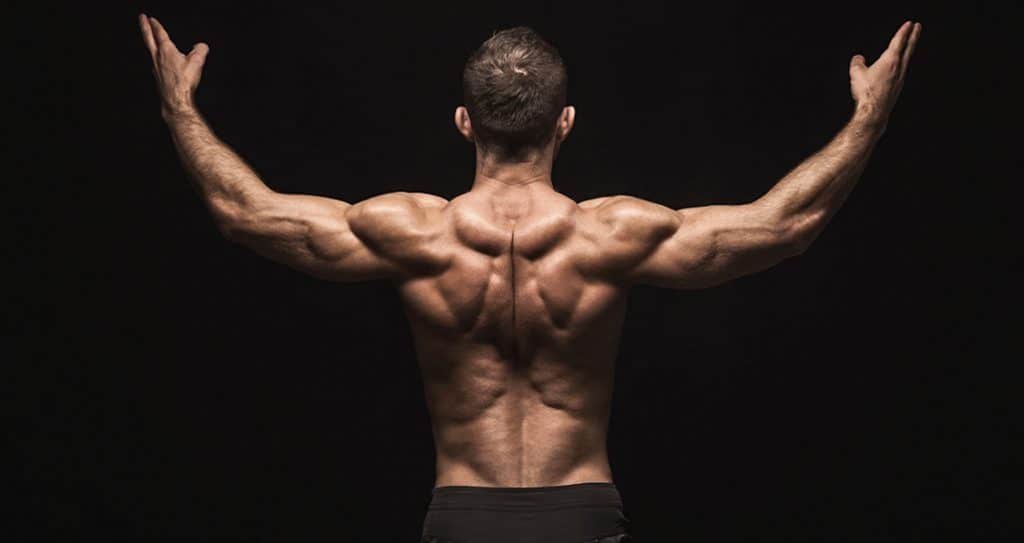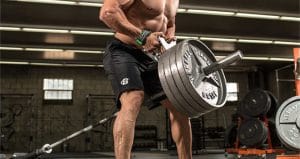The meadows row effectively engages your lower lat muscles.
Discover the ultimate routine to build impressive biceps, sculpt forearms, and achieve a stunning V-taper. Welcome to Meadows rows – a unilateral row exercise named after the renowned bodybuilder, the late John Meadows. Read on for the how-to and exercise guide on Meadows row. In addition, we’ve included some alternatives to this routine, including inverted rows that you can try.
The Meadows row works on your upper and lower body, and what makes this routine special is that it builds the otherwise hard-to-reach lower lats. This exercise improves shoulder stability and is an excellent alternative for lifters with shoulder issues.
Let’s dive into the nitty-gritty of properly doing the movement to ensure maximum gains.
Meadows Row Techniques and Muscles Worked
This exercise trains upper and lower body muscles since you do the Meadows row in a hinge position. During this exercise, your upper body, forearms, lats, traps, rhomboids, biceps, rotator cuff, and delts receive recruitment. The erector spinae, obliques, rectus abdominals, glutes, and hamstrings are the lower body muscles that this routine trains.
The Meadows rows help you train your back and arms for muscle hypertrophy. However, to train them all well, you must do the Meadows row properly. Below is a step-by-step guide to doing the Meadows row with the right form.
- Adopt a staggered stance and ensure your front foot is perpendicular to the T-bar, barbell, or landmine setup.
- Hinge your torso forward and grip the end of the barbell using an overhand grip.
- Rest your other forearm on your forward leg.
- Raise the hip closest to the bar higher than the other hip. This stretches your lower lats and is your starting position.
- Drive your elbows behind you while simultaneously retracting your shoulder blade. (Picture using your elbows to touch the ceiling and ensure your working shoulder stays down.)
- Pull the barbell to your back hip until your elbow is level with your torso.
- Slowly lower until your elbow is straight again, and return to starting position to complete the rep.
Note: Lifting too heavy with this routine could limit your range of motion and reduce your gains. Don’t use momentum; wrist straps could make things easier if it proves too much for hands.
Meadows Row Benefits
Are you still deciding if it deserves a place in your workouts? Here’s a detailed breakdown of the many benefits of this great exercise.
Builds a Thicker and Stronger Back
Research shows that horizontal rows like the Meadows row activate and train the muscles in your back effectively (1). Meadows rows, in particular, hit your back from an unusual angle, which can help overcome a plateau and induce more muscle growth. A stronger back reduces spinal injury risk and carries over to other bodybuilding exercises like deadlifts.
Improves Your Grip Strength
When doing this routine, your fingers and arms work hard to hold the fat end of the barbell. It’s the same for those using a T-bar row. This does wonders for your grip strength.
Corrects Imbalances
Strength imbalances in the arms and back are normal but can be problematic when significant, potentially leading to injuries. Unilateral exercises like the Meadows row help you diagnose and fix these imbalances (2). This is because when doing them, the stronger side can’t take over and compensate for the weaker side.
Trains Lower Lats
Your lower lats extend from your armpits and get close to your waist. This muscle group is notoriously harder to train and develop. Meadows rows use the right angle to train this muscle and help you sculpt that perfect V-taper.
Great Alternative
Tired of the regular old dumbbell rows? Meadows rows are a great alternative to help you break out of that plateau and training monotony. They’ll hit your body at different angles inducing more growth since your muscle aren’t accustomed to that range of motion.
Works on Your Core Strength
Lifting unilaterally throws your body off balance. This forces your core to work hard to keep you steady, thus increasing your core strength.
Better Posture
Meadows rows work on your rhomboids, traps, and posterior delts. These are the muscles that help you maintain good posture. Strengthening them will help you avoid slouching, making you look younger, more athletic, and taller.
Meadows Row Alternatives
Meadows rows are very effective, but this doesn’t mean you have to do them all the time. It’s important to vary your workouts occasionally, as this can help you avoid or break through a plateau (3). Here are some alternatives to Meadows rows that you can try out.
One Arm Dumbbell Row
The one-arm dumbbell row works on your lats, traps, rhomboids, posterior delts, forearms, and biceps. This exercise is also unilateral and is less demanding than Meadow rows. It doesn’t put too much stress on your lower back, either.
T-bar Row
The T-bar row works your lats, traps, abs, rhomboids, forearms, posterior delts, and biceps. However, the T-bar row offers various grips, so you can choose whichever is more comfortable.
Single Arm Cable Rows
Single-arm cable rows are a great alternative because the machine keeps your muscles under constant tension. It builds your lats, core, traps, rhomboids, biceps, posterior delts, and forearms. This routine also allows you to use a large range of motion safely.
Inverted Rows
Inverted rows are a bodyweight exercise that trains your lats, rhomboids, core, traps, forearms, biceps, and posterior delts. They put zero stress on your lower back and are great for your posture. This exercise can be done with a smith machine or squat rack.
FAQs
What muscles do meadows row work?
Meadows row targets upper and lower body muscles, including lats, traps, abs, delts, and hamstrings. Check out the article above for a more detailed breakdown of the muscles recruited by this workout.
What is the meadow row for?
Meadows rows are fantastic ways to sculpt your V-taper and build a thick and strong back. This exercise also builds muscles in your upper and lower body.
What is the difference between a barbell row and a meadow row?
One major difference between a barbell row and a meadow row is that meadow rows are unilateral and work one side of your body at a time.
Follow us on Instagram, Facebook, and Twitter for more exercise guides!
References
- Fenwick, C. M., Brown, S. H., & McGill, S. M. (2009). Comparison of different rowing exercises: trunk muscle activation and lumbar spine motion, load, and stiffness. Journal of strength and conditioning research, 23(2), 350–358. https://doi.org/10.1519/JSC.0b013e3181942019
- Zhang, W., Chen, X., Xu, K., Xie, H., Li, D., Ding, S., & Sun, J. (2023). Effect of unilateral training and bilateral training on physical performance: A meta-analysis. Frontiers in physiology, 14, 1128250. https://doi.org/10.3389/fphys.2023.1128250
- Krzysztofik, M., Wilk, M., Wojdała, G., & Gołaś, A. (2019). Maximizing Muscle Hypertrophy: A Systematic Review of Advanced Resistance Training Techniques and Methods. International journal of environmental research and public health, 16(24), 4897. https://doi.org/10.3390/ijerph16244897









